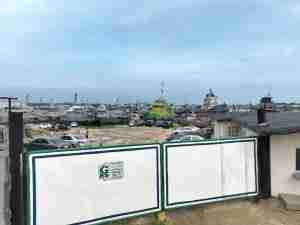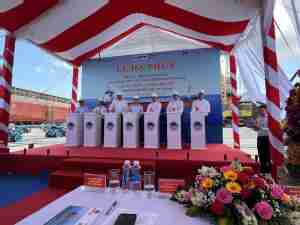Dear Member of Congress,
As ships load and unload their various cargoes at ports, they need to also take on and discharge ballast water to ensure vessel stability, trim and safety. The water pumped onboard to become ballast, however, may contain various aquatic species from that harbor. Many of these are unlikely to survive the voyage or survive in a new environment; however, when that ballast water is discharged at a subsequent port, there is a known risk that they might establish a reproductive population in the new environment. As a result of this risk, the unintentional transportation of marine species in ballast water is an environmental issue requiring attention. The maritime industry has worked closely with the government to take interim steps to address this issue. International shipping vessels now engage in what is called 'mid-ocean ballast water exchange', where they discharge their ballast water taken on in port environments and replace it with mid-ocean water that poses a very low environmental risk. This process is roughly 95% effective at flushing out coastal ballast water from a ship's tanks.
To make further progress on this complicated challenge will require the installation of technology on vessels to treat ballast water, without making the treated water harmful to the ship or to the environment when discharged. The Ballast Water Management Act of 2007 (S. 1578) establishes a comprehensive and effective approach to the issue of addressing the risk of ballast water discharges, including a process to establish an effective national treatment technology standard. It is a good bill for the environment. Congress should pass S. 1578 and establish a clear standard for what would be expected of vessels calling in US ports.
THE PROBLEM: NPDES PERMITS ARE NOT AN EFFECTIVE MECHANISM FOR REGULATING BALLAST WATER
An objection has been raised to S. 1578 on the ground that the National Pollutant Discharge Elimination System (NPDES) permitting mechanism under the Clean Water Act (CWA) is a more appropriate system for regulating ballast water than the ballastwater- specific system to be created under S. 1578. Unfortunately, this is not true, and should not be a reason to block passage of the Inouye bill. Because of the structure of the CWA and the NPDES permitting program, vessels visiting ports in more than one state (which is very common in most sectors of the maritime industry) could be subjected to different permit requirements in each state that they visit. To the extent that different states impose different discharge standards and/or require different treatment technologies to be employed, vessels will be unable to comply with these multiple standards. The United States needs a single standard for vessels to meet so that they can install the necessary treatment technology and know that it will be acceptable in whatever US port they call. Many vessels have no idea which US port they will be calling when they are built. The CWA provides predictable standards for facilities that operate in one state's jurisdiction.
The structure of the CWA and the NPDES permitting system, however, virtually guarantees that a vessel making port calls in multiple states will be called upon to meet different and conflicting standards in each of those states. Under section 402(b) of the CWA (33 USC. ' 1342(b)), the EPA Administrator must delegate NPDES program authority to a requesting state unless the Administrator finds that one of the statutory disqualifying conditions exists. Once program authority is delegated, the Administrator loses authority to issue permits within the scope of the state's delegated program. There is no requirement that state programs be consistent with one another. Once a state program has met the minimum standards set by the EPA, the










